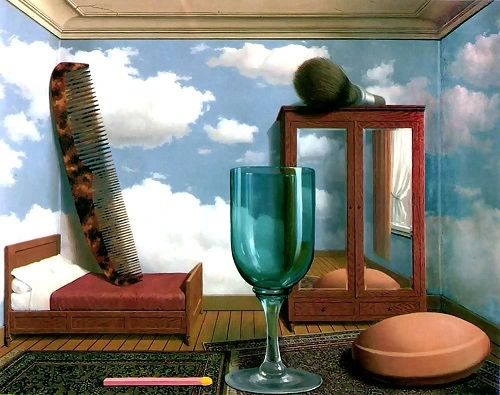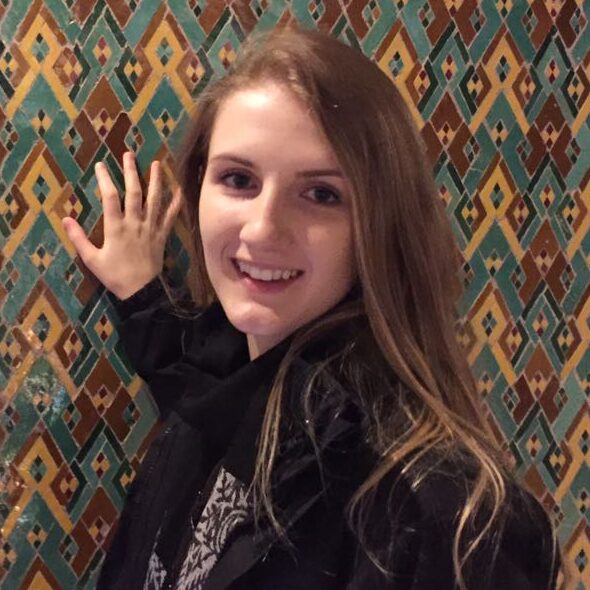The Journey Inside the Mind: What Are Dreams and Nightmares?
Dreams and nightmares have fascinated humanity for centuries. They are not just random fragments of our minds but deep reflections of what is hidden in our subconscious. According to Sigmund Freud, a dream is the “disguised fulfillment of wishes,” a way for our unconscious to express itself. Carl Jung, on the other hand, believed dreams were a connection to the collective unconscious, bringing forth universal symbols and archetypes.
What makes dreams and nightmares so intriguing is their ability to go beyond what we can comprehend rationally. They speak directly to our deepest emotions and fears. Through dream interpretation, we can begin to understand what is bothering us or guiding us in our daily lives. This phenomenon becomes even more intriguing when reflected in art. Painting, as a form of expression, is a powerful tool for exploring this inner world and translating these images and emotions into something tangible.
Recurring dreams, nightmares, or even the simplest yet vivid ones can be transformed into works of art, revealing hidden aspects of our psyche. When you paint, you’re not just representing something you saw while sleeping, but you’re building a bridge between the real world and the symbolic universe that inhabits your mind.
Painting the Invisible: The Art of Representing the Subconscious
Painting has the unique ability to translate the immeasurable: our deepest feelings, fears, and desires. While words can often be limiting when it comes to expressing what we feel in our dreams, painting frees the mind and body, allowing images to emerge without censorship or restriction. Often, we try to understand our dreams in a logical way, but what they truly require is a more sensitive and free approach—something that art provides.
Painting offers us a visual language where form and color become the words, and brushstrokes and texture, the grammar. There is no strict rule about how a dream or nightmare should be represented in art; the beauty lies in allowing the imagination to move organically. Sometimes the colors might be more intense than those we see in the real world, and the shapes may appear distorted, reflecting the sensations and emotions that dreams stir up.
A good example of this is the work of surrealist artists like Salvador Dalí and Max Ernst, who used their own dreams and visions as a starting point for their work. Dalí, for instance, created his famous “Melting Clocks” from a dream about melting and distorted time. For Dalí, painting was a way of “capturing” dreams, something he believed was essential to understanding the human subconscious. For him, art wasn’t just a visual expression; it was a way to dive deep into the layers of the mind.
Turning Dreams Into Colors: Painting Techniques to Explore Your Inner World
Now that we understand the power of painting as a tool to explore the subconscious, let’s look at some practical techniques to help you bring your dreams to life.
The Visual Dream Journal: Capturing the Impossible
One of the simplest and most effective ways to start painting your dreams is to keep a visual dream journal. Upon waking, while your mind is still saturated with fragments of the dream, try immediately capturing the images and emotions that emerged. Don’t worry about clarity or perfection. The important thing is to capture the essence of the dream—its feeling, color, form, and movement. This can be done with pencils, colored pens, or soft watercolors.
Even if you can’t remember specific details, the attempt to record the essence of the dream can be incredibly revealing. The “Visual Dream Journal” helps to connect the fleeting images of the dream with a tangible visual expression, building a bridge between the unconscious and the conscious.
Automatic Painting: Let the Subconscious Guide Your Brush
Automatic painting, popularized in the surrealist movement, involves painting without a conscious plan. The goal is to let the hand move freely without interference from reason or logic. Surrealist André Breton believed this method was a way of directly accessing the deeper layers of the psyche.
When starting, don’t worry about form or what you’re creating. Let your mind loosen up and allow the brush movements to reveal figures or shapes. You’ll be surprised by the images that emerge when there’s no external pressure or expectation of what “should” be done. This type of painting creates a space where the subconscious manifests in its purest and most uncensored form.
Dream Collage: Creating Surreal Realities with Fragmented Images
Dream collage is an excellent technique for those who want to explore dreams in a more fragmented and symbolic way. In this process, you use cutouts from magazines, newspapers, or other visual media to create a new picture that reflects your dream. The images can be combined in unexpected ways, creating a surreal world, much like the work of artists like Max Ernst, who combined human and animal figures in unsettling landscapes.
The beauty of collage lies in its flexibility. You can take pieces of images that capture an emotion or moment from the dream and arrange them into a visual narrative. This process is also an excellent way to let the subconscious express itself, as you’ll be working with fragmented elements that slowly come together to form a new whole.
Active Imagination: Dialogue Between You and Your Inner World
The technique of Active Imagination, developed by Carl Jung, can be integrated into painting dreams. This approach involves establishing a dialogue with the images that appear in your mind. For example, if you dreamt of a symbolic figure, like a tree or an animal, engage with that image. Ask it what it represents or how it feels. As you paint this figure, don’t just reproduce it; add details or change its colors based on the symbolic responses your mind offers.
By giving life to these images actively, you’re creating a deeper connection with your subconscious. Art becomes not just a representation of what you dreamed, but a journey of self-discovery.

Getting Started: A Beginner’s Guide to Painting Your Dreams
Now that you know some techniques, it’s time to start painting your own dreams. For beginners, don’t worry about perfection or the final product. The process is more important than the outcome.
Create Your Creative Space
Choose a quiet, undistracted location where you can fully concentrate on your creation. It could be a simple table or even a corner of your home where you feel at ease. A conducive environment for relaxation helps keep your mind open and connected to your inner world.
Choose Simple Materials
For those just starting, there’s no need for expensive or sophisticated materials. Pencils, acrylic paints, watercolors, and good-quality paper are enough to get started. What matters most is feeling comfortable with the materials you choose.
Step-by-Step to Painting Your Dreams
- Upon waking, jot down any fragments of the dream you remember.
- Identify the feelings or symbols that emerged and associate colors and forms with those sensations.
- Begin painting without rushing to finish. The goal is to create a visual representation, even if abstract, of what you felt.
- Once you observe your painting, try to identify elements that might relate to your emotions, fears, or hidden desires.
Inspiration for Your Canvas: Artists and Works That Painted Their Dreams
Many artists stood out by using their own dreams as a base for their works. A striking example is surrealist painter René Magritte, who frequently explored themes of identity, illusion, and perception of reality. His paintings, like “The Son of Man,” are a good representation of how dreams can challenge our view of the real world.
In addition to Magritte, Mexican artist Frida Kahlo also used painting to explore her own fears and traumas. Her works, such as “The Broken Column,” reveal an inner world marked by physical and emotional pain—a way of dealing with the scars of life.
Painting Nightmares: How to Turn Fear Into Art
Nightmares can be a fertile ground for creativity. Instead of fearing these experiences, you can use them as an opportunity for artistic expression. For example, a recurring nightmare about being chased could be transformed into a dramatic scene, where the pursuer takes on a more symbolic form, like a shadow or a distorted monster.
The simple act of creating a visual image of fear can be transformative. Not only do you gain control over the narrative, but you also find a way to confront what scares you by turning it into creative expression.
Keeping the Practice Alive: Turning Your Dreams Into Ongoing Art
Consistent practice is one of the keys to deepening the exploration of the subconscious. Establishing a painting routine, whether daily or weekly, allows you to track your emotional and creative evolution. Over time, you’ll see how your dreams and emotions are reflected in your art, building a stronger connection between your conscious and subconscious minds.
Sharing Your Creations: What to Do with Your Dream-Inspired Art
Exposing your paintings can be a powerful way to validate your creative journey. This can be done safely, such as by sharing on social media, participating in art groups, or creating an online gallery. By showing your creations, you allow others to see what is often invisible, offering a sincere glimpse into your soul.
Painting as the Key to the Subconscious: The Power of Exploring the Unexplored
Painting your dreams is more than a form of art; it’s a powerful tool for self-awareness and healing. As you commit to this practice, you’ll begin to understand yourself more deeply—your fears, desires, and traumas. Art offers a unique way to engage with the unconscious, and by doing so, you may find new ways of living, growing, and transforming.

